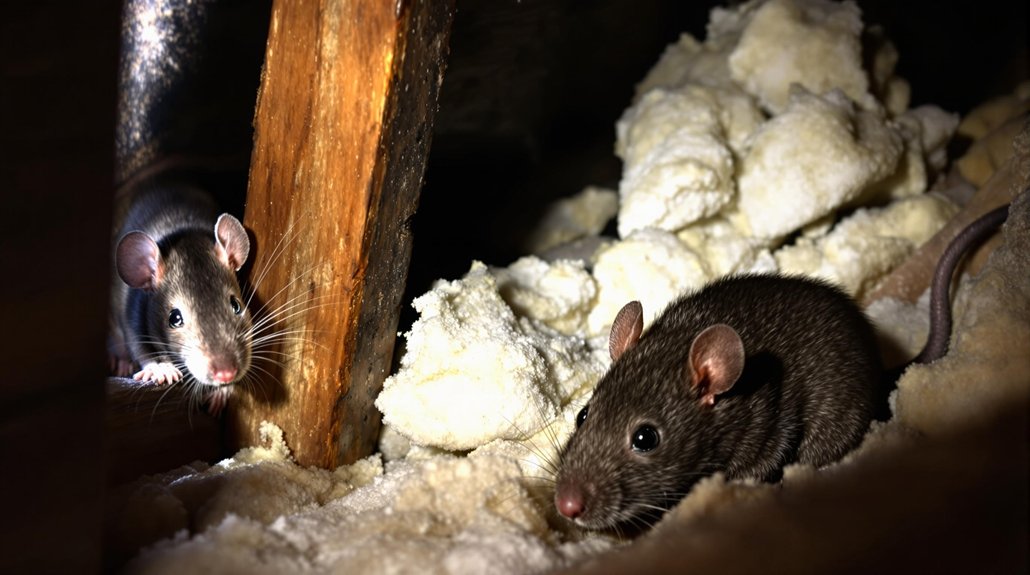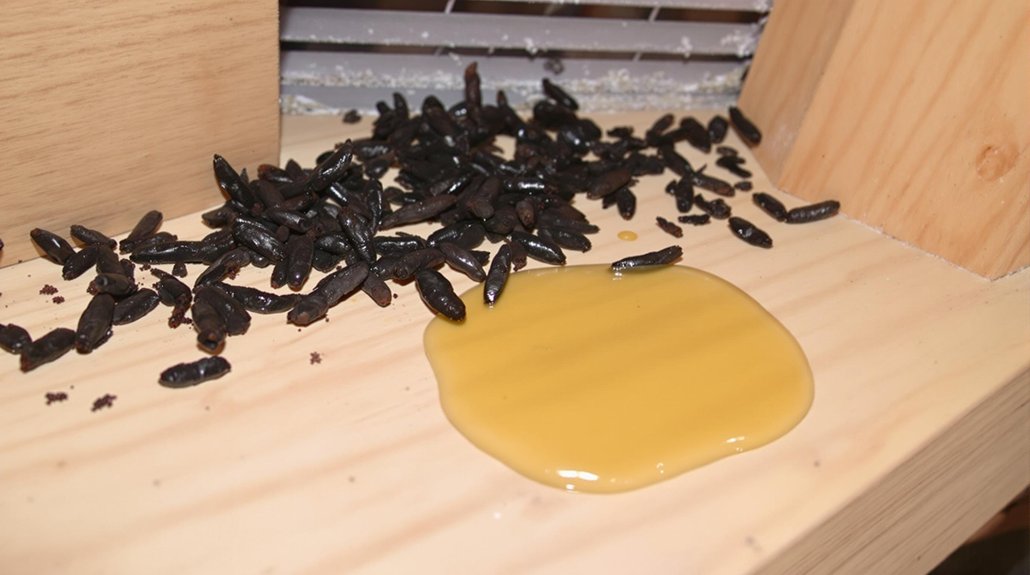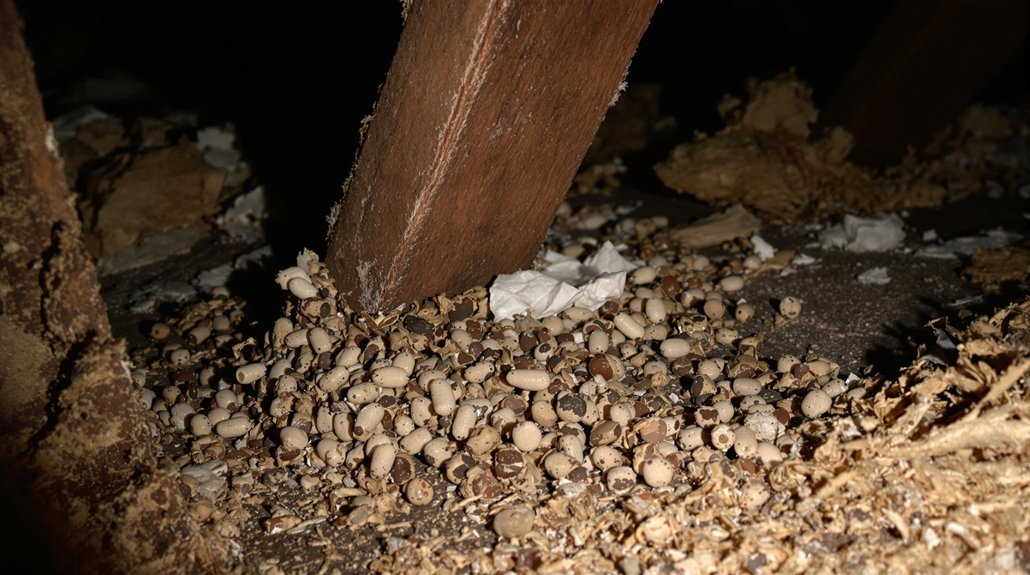Critter Wranglers, LLC Blog
Have an issue? Contact us today

How Do I Know if It’s a Rat or Mouse in My Attic?
To determine if you have a rat or mouse in your attic, start by observing their size. Rats are typically 9-11 inches long, while mice measure 2.5-4 inches. Check droppings too; rat droppings are about ½ inch long, whereas mouse droppings are around ¼ inch. Additionally, listen for sounds: mice are more social and active at night, while rats tend to be quieter and more solitary. Consider the nesting materials as well; mice prefer soft items, and rats use sturdier materials. Understanding these distinctions will help you identify the rodent and inform your next steps in pest control.
Key Article Highlights
- Measure droppings: Rat droppings are about ½ inch long, while mouse droppings are approximately ¼ inch long.
- Inspect nesting materials: Mice use soft materials like paper, whereas rats prefer tougher materials like dried leaves.
- Observe behavior: Mice are active at night and social, while rats are more cautious and tend to be solitary.
- Check for gnaw marks: Rats create larger, more significant gnaw marks on structures compared to smaller marks left by mice.
- Smell for urine: Rat urine has a strong ammonia-like odor, while mouse urine has a milder scent.
Identifying Physical Differences

When it comes to identifying rodents in your attic, understanding their physical differences is vital. Two common rodents are rats and mice, and they can be distinguished by their physical size and tail length. Rats are generally larger, measuring about 9 to 11 inches long, excluding their tails, which can be equally long or longer. In contrast, mice are smaller, typically ranging from 2.5 to 4 inches in body length, with tails that are long but proportionately shorter than a rat's. Observing these features can help you determine which rodent is present in your attic. Accurate identification is essential for effective removal and prevention strategies, ensuring a safer environment for you and your family.
Understanding Behavioral Traits
Behavioral traits can provide valuable insights into identifying rodents in your attic. Understanding their behavioral patterns and social interactions is essential. Mice tend to be more social, often seen in groups, while rats tend to be more solitary. Observing how they navigate their environment can also help.
| Rodent Type | Behavioral Patterns | Social Interactions |
|---|---|---|
| Mouse | Active at night, curious | Live in colonies |
| Rat | Cautious, more territorial | Prefer solitude |
| Both | Evasive when threatened | Communicate through sounds |
Analyzing Droppings and Urine

To effectively identify rodents in your attic, analyzing droppings and urine is an essential step. Rat droppings are typically larger, measuring about ½ inch long, while mouse droppings are smaller, around ¼ inch. Examining the dropping size can help you determine which rodent has invaded your space. Additionally, the presence of urine can provide further clues. Rat urine has a strong, ammonia-like odor, while mouse urine may have a milder scent. Look for yellowish stains or dried spots, which indicate rodent activity. By carefully observing these signs, you can accurately identify whether you are dealing with rats or mice, allowing for more effective control measures to protect your home and serve others in maintaining a safe environment.
Recognizing Nesting Habits
Recognizing nesting habits is essential for identifying the type of rodent residing in your attic. Mice typically use soft, shredded materials such as paper, fabric, or insulation for their nests. Their nests are often found in hidden locations, like corners, wall voids, or near beams. In contrast, rats prefer to build nests using more robust materials, including dried leaves, grass, and even debris. They tend to nest in more open areas, such as rafters or near food sources. Observing the nesting materials and locations can provide valuable clues. By understanding these habits, you can better determine whether you are dealing with mice or rats in your attic, allowing for effective intervention and support.
Assessing Damage and Risks

While evaluating damage and risks associated with rodent infestations in your attic, it is vital to examine both the physical impact and potential health hazards they pose. A thorough damage assessment should include checking for gnaw marks, droppings, and nesting materials, as these signs indicate the extent of the infestation. Structural damage may occur to insulation, wiring, and wooden beams, leading to costly repairs. Additionally, rodents can carry diseases that pose serious health risks to humans, such as hantavirus and leptospirosis. It is important to address infestations promptly to minimize both damage and health concerns. By understanding these risks, homeowners can take appropriate action to protect their property and guarantee a safe living environment for their families.
Frequently Asked Questions
Can I Use Traps for Both Rats and Mice?
Yes, traps can be used for both rats and mice; however, selecting appropriate trap types is essential. Additionally, effective bait selection tailored to the target species enhances the success of your pest control efforts.
What Sounds Indicate a Rat or Mouse Presence?
Sounds indicating rodent presence include scratching noises as they navigate walls or insulation, and scurrying sounds associated with their movement. Recognizing these auditory signs can help homeowners address potential infestations effectively and promptly.
How Do I Prevent Rodents From Entering My Attic?
Approximately 20% of homes experience rodent infestations annually. Effective rodent proofing techniques include thorough entry point identification, sealing gaps, and using durable materials. Maintaining cleanliness and proper food storage further deters rodents from entering your attic.
Are There Specific Seasonal Trends for Rodent Activity?
Rodent activity exhibits seasonal behavior, with increased populations during warmer months due to breeding cycles. Understanding these patterns can aid in prevention strategies, ensuring effective management of potential infestations in residential spaces throughout the year.
Is Professional Pest Control Necessary for Rodent Infestations?
Professional pest control is often necessary for rodent infestations due to their potential health risks and the cost effectiveness of expert solutions. Trained professionals can efficiently eliminate rodents while ensuring a safe environment for all.
